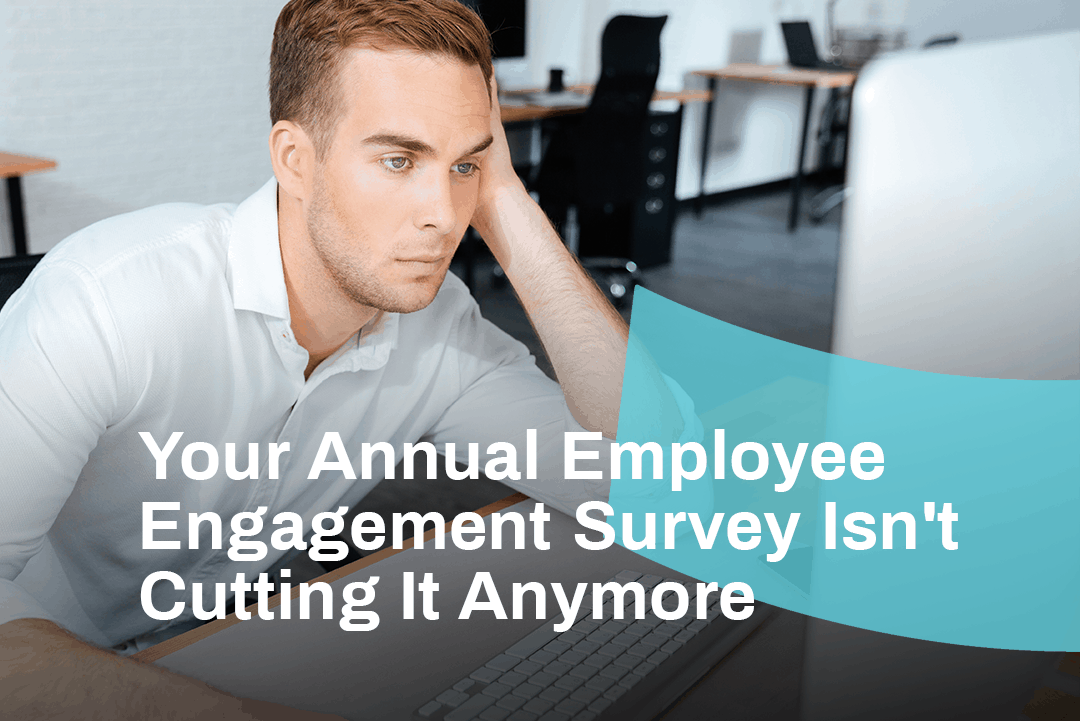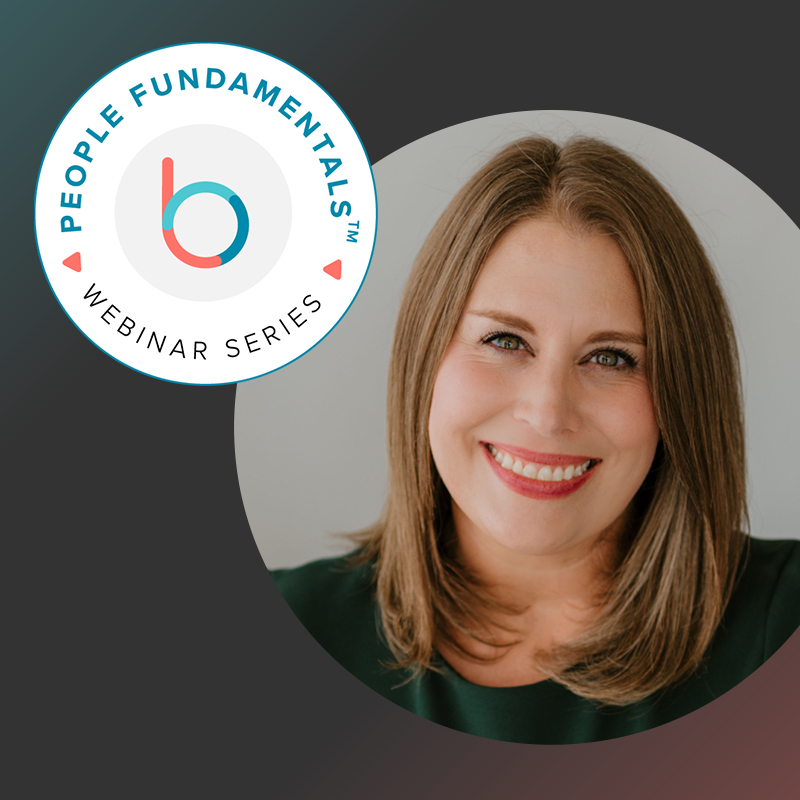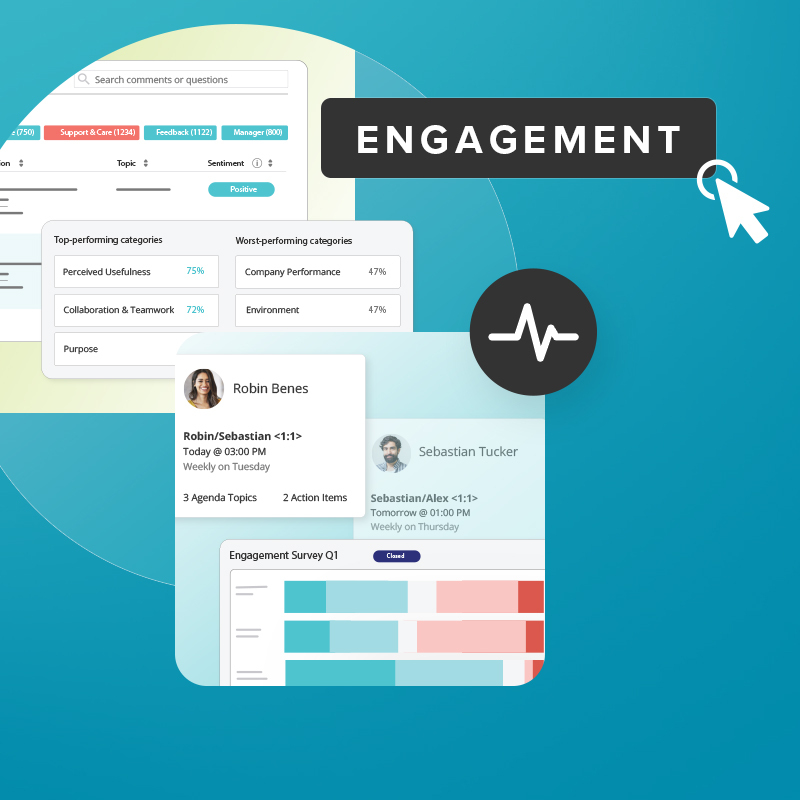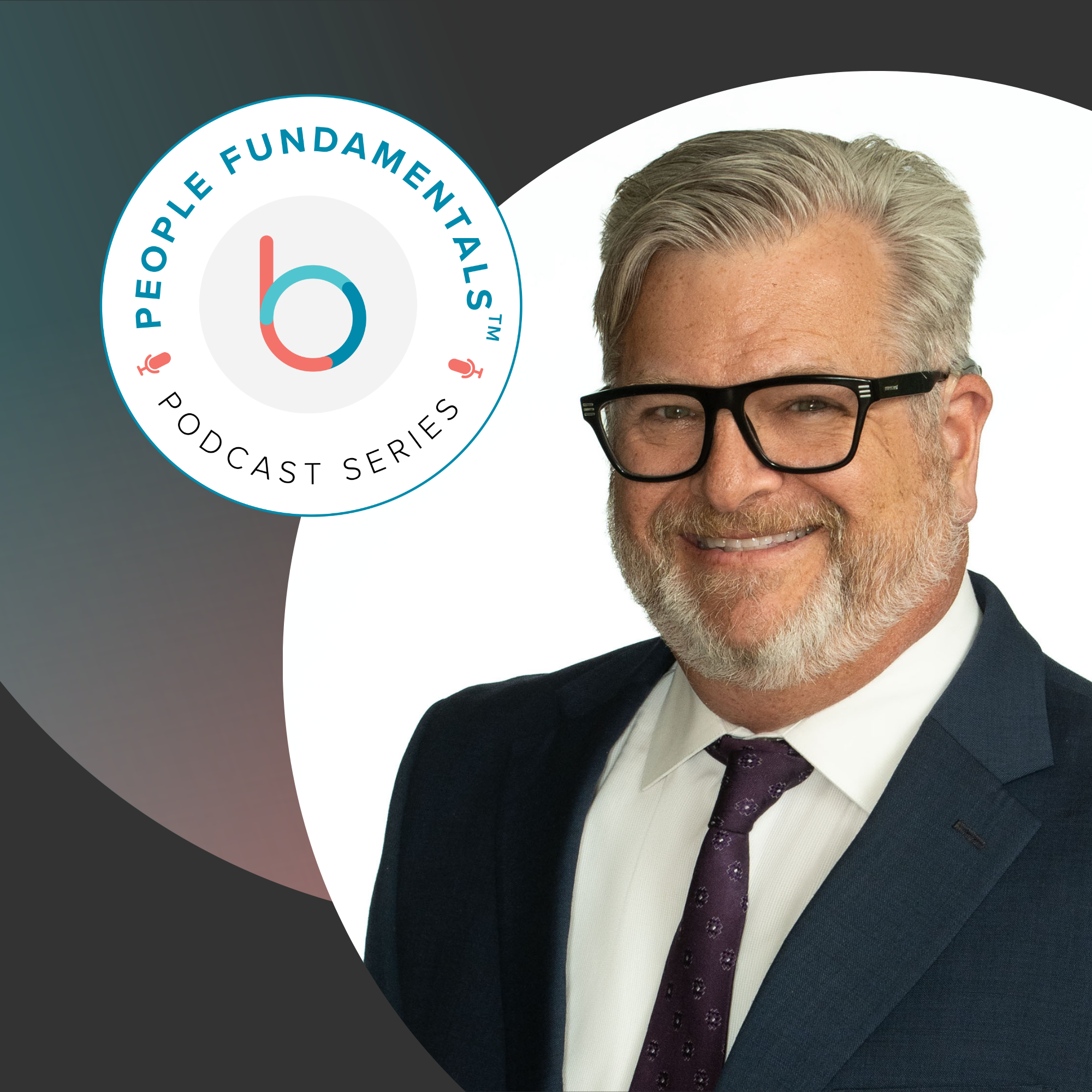Employee engagement surveys are the heart of any sound engagement strategy. They’re the source waters for the critical people data that an organization needs to accurately gauge its employees, inform action plans, and affect positive change. However, all of these benefits depend on immediate and authentic insights, something that a traditional, old fashioned annual survey cannot provide.
This isn’t to say that an annual employee survey doesn’t have its time and place. But seeing how quickly things can and do change over a year, relying on a single yearly engagement survey is like saying the weather will be the same at 5 pm as it was at 7 am. Storm fronts come out of nowhere, and unless you take a more consistent pulse of your people, your organization could very well get caught in the rain without an umbrella.
We’re going to examine the different reasons why a single annual survey is insufficient to accurately measure employee engagement in the modern workplace, including topics like:
- Identifying Trends
- Taking Consistent Action
- Additional Feedback Channels
- A Wider Range of Feedback
As you’ll see, more consistent employee feedback gives organizations the flexibility needed to continually improve engagement and evolve with the times.
Frequent Surveys, Frequent Feedback
One of the main purposes of engagement surveys is to identify problems within an organization. This doesn’t just include fully developed issues, but negative trends as well. If your enterprise is only doing an annual survey, it makes it very difficult – if not impossible – to identify those trends and effectively address them before they grow.
Alternatively, a quarterly or even biannual engagement survey, ideally with smaller pulse surveys in between, gives you a significantly better chance at catching problems before they become full-fledged issues. Such issues can stem from any number of sources, ranging from a change in the break room coffee to more structural problems like turnover, particularly in the leadership ranks.
Speeding up the cadence of engagement surveys is a simple way to prevent issues from growing.
Either way, the ripple effect has a way of intensifying over time, turning small issues into major, systemic problems that can quickly affect the entire organization, its employees, and customers. Speeding up the cadence of engagement surveys is a simple way to prevent issues from growing and spreading within the work environment.
Also, keep in mind that an annual survey only captures a pulse on your people for a particular time of year. For instance, if your employees only provide feedback every January, you’re missing insights from the summer months when attitudes and outlooks could be very different.
Consistent Action
Taking more consistent action works in conjunction with a greater frequency of engagement surveys. Additional feedback throughout the year allows HR and managers to drill down into trends and insights, revealing more in-depth issues that a strictly high-level survey might miss. Consistent feedback leads to consistent action planning, allowing the employer to continually convey an essential message to its people – that their insights and voices matter in the decision-making process.
Likewise, even if a range of action plans stem from an annual survey, there’s no way to track progress on those plans without any follow-up. Of course, you can always wait until the next annual survey to monitor success in your action planning but, as discussed, much can change in 12 months.
Technology can be instrumental in amplifying the insights from a more frequent engagement survey strategy. Tools like machine learning and NLP let an employer dig even deeper into people data, extracting and interpreting granular, complex details like emotion from open-ended survey questions. NLP, for instance, is especially useful for a larger company that needs a convenient but accurate way of monitoring the mindset of its people without overwhelming HR.
Feedback Beyond Surveys
Besides more frequent surveys, there are other feedback channels available that extend the power and immediacy of feedback even more. Polls play a significant role through their unique ability to provide real-time insights on an action plan or initiative. For example, longer form survey results might reveal a particular issue with communication in a specific department. HR can use a one or two question poll every couple of months or so to measure the success of an action plan aimed at improving communication in that department.
Since each poll is only a question or two, they have a very low risk of survey fatigue.
Polls are also a convenient way to quickly monitor a series of issues across an entire employee base. As an example, you can rotate questions every month, targeting communication in one month, engagement in the next, and collaboration and teamwork in the third. In each subsequent quarter, you can ask the same questions to monitor progress throughout the year. This is another effective way to see what’s trending upwards or downwards and, most importantly, quickly identify any growing issues. Since each poll is only a question or two, they have a very low risk of survey fatigue and won’t overburden employees.
Open forums are another feedback channel that can help fill in insights that might escape even a frequent engagement survey program. Solutions like our own Betterworks Engage Voice allow an employer to passively gather unsolicited feedback from employees, creating a safe and ongoing conversation between leadership and its people. This is another area where NLP can reveal sentiments that are extremely difficult to identify, much less analyze, with any degree of accuracy.
A Wider Range of Feedback Topics
Every organization consists of different facets, meaning HR and management must cover a wide range of feedback topics to develop a well-rounded view of the employee base and engagement levels. At Betterworks Engage , we’ve categorized these many facets into 13 separate engagement drivers that all impact engagement, company culture, and productivity in some unique way.
Trying to cover all of these different angles with an annual engagement survey, no matter how comprehensive it might be, is next to impossible. First, asking employees to take a 500 question survey that covers each of the 13 drivers is a sure way to develop survey fatigue that can quickly sour people on the engagement strategy itself. Also, because every organization and industry is different, there will always be additional niche topics that only increase the scope of feedback necessary to take an accurate pulse.
In other words, employing frequent surveys rather than a single annual one allows HR and managers to cover significantly more ground throughout the year. For example, using a longer, 50 question survey once a year in conjunction with shorter, 20 question quarterly survey lets HR take a far deeper dive into every part of the employee experience. Similarly, since a company can gather feedback from onboarding all the way through exit surveys and alumni polls, it can collect a comprehensive view of the entire employee’s journey as well.
Know Your Limits
Frequent surveys and feedback give employers an agility, immediacy, and thoroughness that an annual employee engagement survey cannot match. However, as beneficial as quarterly or biannual surveys, polls, and other feedback channels might be, it’s important that you don’t bite off more than you can chew.
Pair feedback frequency with your organization’s bandwidth to ensure that your engagement strategy is manageable. As you become accustomed to it, your capacity to collect, process, and analyze the feedback will grow. Your diligence and perseverance will be well-rewarded as improved engagement and employee satisfaction will have a positive effect on every corner of your organization.




